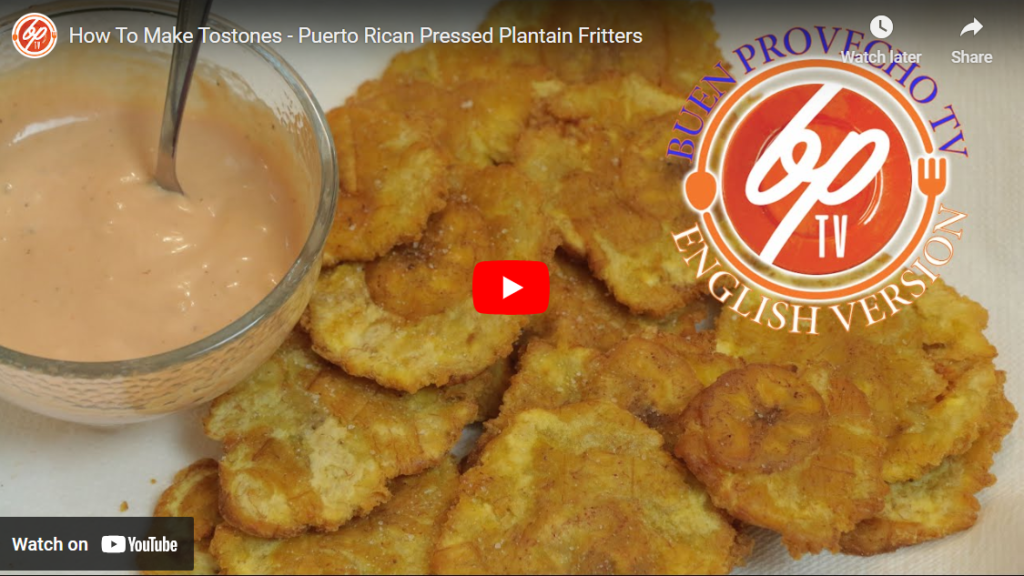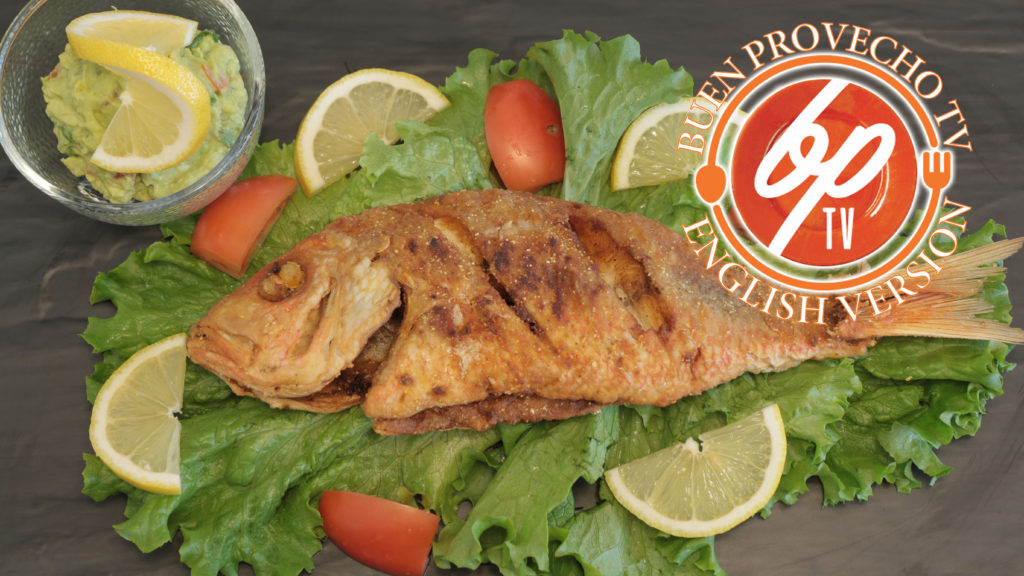Tostones are a classic of the Puerto Rican cuisine and a recipe that is both simple and fun to make.
You will need green plantains, preferably large, you should get about eight to ten tostones from each plantain when cutting at around 1″ to 1 1/2″ inches. How many to make is all up to you, the thicker you cut the larger the tostones will turn out.
Many people use a “tostonera” which is a press to make tostones, it is nice to have a “tostonera” but it is not essential. I don’t have one and always make my tostones just like you see in the video by pressing them against two flat surfaces. These surfaces can be made of wood, ceramic, plastic and cristal among others. Be mindful of the thickness of whichever item you choose to use as a press since you want to avoid breaking it with the force applied while pressing the tostones.
The second aspect of tostones comes down to how thick or thin you want to press them. A general rule is 1/4″ to 3/8″ of an inch, anything thinner or thicker than that would somewhat be out of the normal.
If you are making lots of tostones I suggest cutting the plantains and placing the pieces in a bath of lightly salted water. Otherwise they will turn dark if left in a container without being cooked for long. Actually, your fingers will turn dark while peeling the skins off the plantains, this is normal and due to a substance in their skin. I recommend the use of gloves to avoid this phenomenon.
The first time you fry the plantains, you are looking for a light golden color before taking them out. Then, after pressing them, the second time they are fried you are looking for a slightly darker golden color. Frying at around 375°F is very important, if the temperature is below 375°F the plantains will absorb too much oil and become dark and saggy, not appealing at all. If the temperature is higher then we risk burning them or leaving them raw internally.
Lastly, season them with salt or sazón to taste. In Puerto Rico it is also common to season them with “mojito de ajo” which in most cases is a solution made out of garlic, oil, water and salt. This mojito also serves as a replacement for the famous “MayoKetchup” and it is usually the choice of those who don’t like one of the main ingredients in the “MayoKetchup”.
As you saw in the video I make my very own version of the “MayoKetchup” by replacing the mayonnaise with Ranch dressing. The ratio to make “MayoKetchup” or my “RanchoKetchup” generally is one part of Ketchup to two parts of Mayo or Ranch but if you prefer less tartness and sweetness, which is added by the ketchup, then it can also be one part of Ketchup to three parts of Mayo or Ranch. You may add one minced fresh garlic clove for every half a cup to one cup of the dip you make depending on how powerful you’d like the garlic flavor to be.
That’s it, enjoy!






